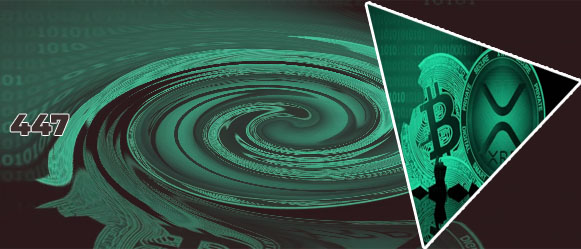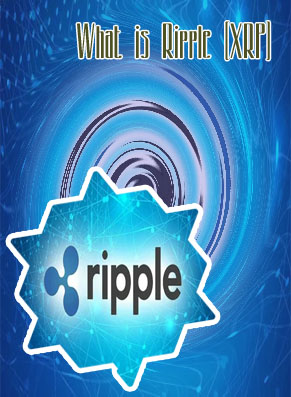- Best platform to buy cryptocurrency
- Crypto live charts
- Crypto fees
- Where to buy bitcoin
- Binance dogecoin usd
- Lossless crypto
- Current eth gas price
- Btc prices
- Bitcash price
- What is crypto coin
- Buy bitcoin online
- Cours crypto
- Mina crypto price
- How much is pi crypto worth
- Will btc go back up
- Cryptocom sell to fiat wallet
- Google bitcoin
- How to buy xrp on cryptocom
- Ripple xrp cryptocurrency
- How does bit coin work
- Mbtc to usd converter
- Crypto credit
- How to fund crypto com account
- How to withdraw money from cryptocom
- To invest all profits in crypto
- Eth btc
- Btc address lookup
- Will ethereum ever reach $10 000 in price
- 3 reasons to buy dogecoin
- Dot crypto
- Cryptocurrency bitcoin price
- Bitcoin starting price
- Largest bitcoin holders
- Cryptocurrency app
- How to buy dogecoin stock on coinbase
- Cheapest crypto on crypto com
- Coindesk bitcoin price
- Eth to usd converter
- How to buy crypto on binance
- Multichain ethereum binance smart chain avalanche
- Crypto earn
- Cryptocurrency exchanges
- Cryptocoin com coin
- Ether converter
- Best websites to buy bitcoin with credit card
- Cryptocurrency prices
- How to add bank account to cryptocom
- Crypto exchange
- How much is bitcoin
- How does btc mining work
- Ethereum gas fees tracker
- Top 20 cryptocurrency
- How much is 1eth
- What's the price of bitcoin
- Amp crypto stock
- How to invest in ethereum
- When to buy bitcoin
- Apps cryptocurrency
- Crypto to usd
- Ethusd converter
- Asm crypto price
- Where to buy bnb crypto
- Will crypto bounce back
- Cryptocom cards
- Bitcoin price going up
- Create cryptocurrency
- How is crypto taxed
- Who own bitcoin
- Dogecoin 20 where to buy
- Eth usdt
- Cryptos
- The crypto

Xrp crypto
Best wallet for crypto
Ripple crypto has been a hot topic in the world of cryptocurrency, with many investors and enthusiasts looking for ways to understand and navigate this digital asset. To help shed some light on the subject, we have compiled a list of four articles that delve into different aspects of Ripple crypto. From its origins and technology to its use cases and potential future, these articles offer valuable insights for anyone looking to learn more about Ripple and its impact on the crypto market.
The History and Evolution of Ripple: A Deep Dive into the Origins of this Crypto Giant

Ripple, a popular digital currency, has seen significant growth and evolution since its inception. Originally released in 2012, Ripple aimed to provide a decentralized payment system that could facilitate fast and low-cost cross-border transactions. The technology behind Ripple is based on a consensus ledger, which differs from the blockchain used by other cryptocurrencies like Bitcoin. This unique approach allows for faster transaction speeds and lower fees compared to traditional banking systems.
One of the key factors contributing to Ripple's success is its partnerships with major financial institutions around the world. By collaborating with banks and payment providers, Ripple has been able to establish itself as a reliable and efficient payment solution for international transfers. In addition, Ripple's native digital asset, XRP, plays a crucial role in facilitating transactions on the network.
Over the years, Ripple has continued to innovate and adapt to the changing landscape of the cryptocurrency industry. With a focus on regulatory compliance and scalability, Ripple has positioned itself as a leader in the field of digital payments. The company's commitment to transparency and security has helped build trust among users and investors alike.
In conclusion, the history and evolution of Ripple showcase the potential for blockchain technology to revolutionize the way we think about financial transactions. By providing a fast, secure, and cost-effective payment solution, Ripple has
Ripple vs. Bitcoin: A Comparison of Two Leading Cryptocurrencies
When it comes to comparing Ripple and Bitcoin, it is essential to understand the key differences between the two leading cryptocurrencies. While Bitcoin is a decentralized digital currency that operates on a peer-to-peer network, Ripple is a digital payment protocol designed for fast and efficient cross-border transactions.
One of the main distinctions between the two cryptocurrencies is their consensus mechanisms. Bitcoin uses a proof-of-work algorithm, which requires miners to solve complex mathematical puzzles to validate transactions and secure the network. On the other hand, Ripple utilizes a unique consensus protocol known as the Ripple Protocol Consensus Algorithm (RPCA), which does not rely on mining and is more energy-efficient compared to Bitcoin.
In terms of transaction speed and cost, Ripple outshines Bitcoin by offering faster and cheaper transactions. Ripple's network can process up to 1500 transactions per second, while Bitcoin can only handle around 7 transactions per second. Additionally, Ripple transactions are known for their low fees, making it an attractive option for individuals and businesses looking to send money internationally.
One practical use case of Ripple's technology is its partnership with Santander Bank to provide a mobile payment solution for cross-border transactions. By using Ripple's blockchain technology, Santander was able to offer its customers a fast and cost-effective way to send money abroad, resulting
Harnessing the Power of Ripple: Exploring Real-World Use Cases for XRP
Ripple's digital asset, XRP, has been gaining traction in the cryptocurrency world due to its unique features and real-world applications. One of the key use cases for XRP is its role in cross-border payments, where it offers fast and cost-effective transactions compared to traditional banking systems. According to recent data, XRP transactions settle in just a few seconds, making it an ideal solution for international money transfers.
Another important use case for XRP is its potential to revolutionize the remittance industry. By leveraging Ripple's technology, financial institutions can facilitate instant cross-border payments at a fraction of the cost of traditional methods. This has the potential to benefit millions of people around the world who rely on remittances for their livelihood.
Furthermore, XRP's scalability and low transaction fees make it an attractive option for micropayments and e-commerce transactions. With the rise of online shopping and digital transactions, XRP could play a significant role in facilitating seamless and efficient payment processing.
In conclusion, the real-world use cases for XRP demonstrate its potential to disrupt the financial industry and revolutionize the way we transact globally. As more businesses and financial institutions adopt XRP for cross-border payments, remittances, and e-commerce, the impact of this digital asset on the
The Future of Ripple: Predictions and Trends for This Growing Cryptocurrency
Ripple has been making waves in the world of cryptocurrency, with its unique technology and growing popularity among investors. As we look ahead to the future of Ripple, there are several predictions and trends that are worth keeping an eye on.
-
Increased adoption by financial institutions: Ripple's technology, particularly its digital payment protocol XRP, has been gaining traction among banks and financial institutions. As more institutions recognize the benefits of using Ripple for cross-border payments, we can expect to see increased adoption in the coming years.
-
Regulatory challenges: Like other cryptocurrencies, Ripple faces regulatory challenges as governments around the world grapple with how to regulate digital currencies. How regulators choose to approach Ripple will have a significant impact on its future growth and adoption.
-
Competition from other cryptocurrencies: While Ripple has carved out a niche for itself in the digital payment space, it faces stiff competition from other cryptocurrencies like Bitcoin and Ethereum. How Ripple differentiates itself from its competitors will be key to its long-term success.
-
Expansion into new markets: Ripple has already made inroads in markets like Asia and the Middle East, but there is still room for growth in other regions. As Ripple continues to expand its reach, we can expect to see its influence grow on a global scale.
-
Technological